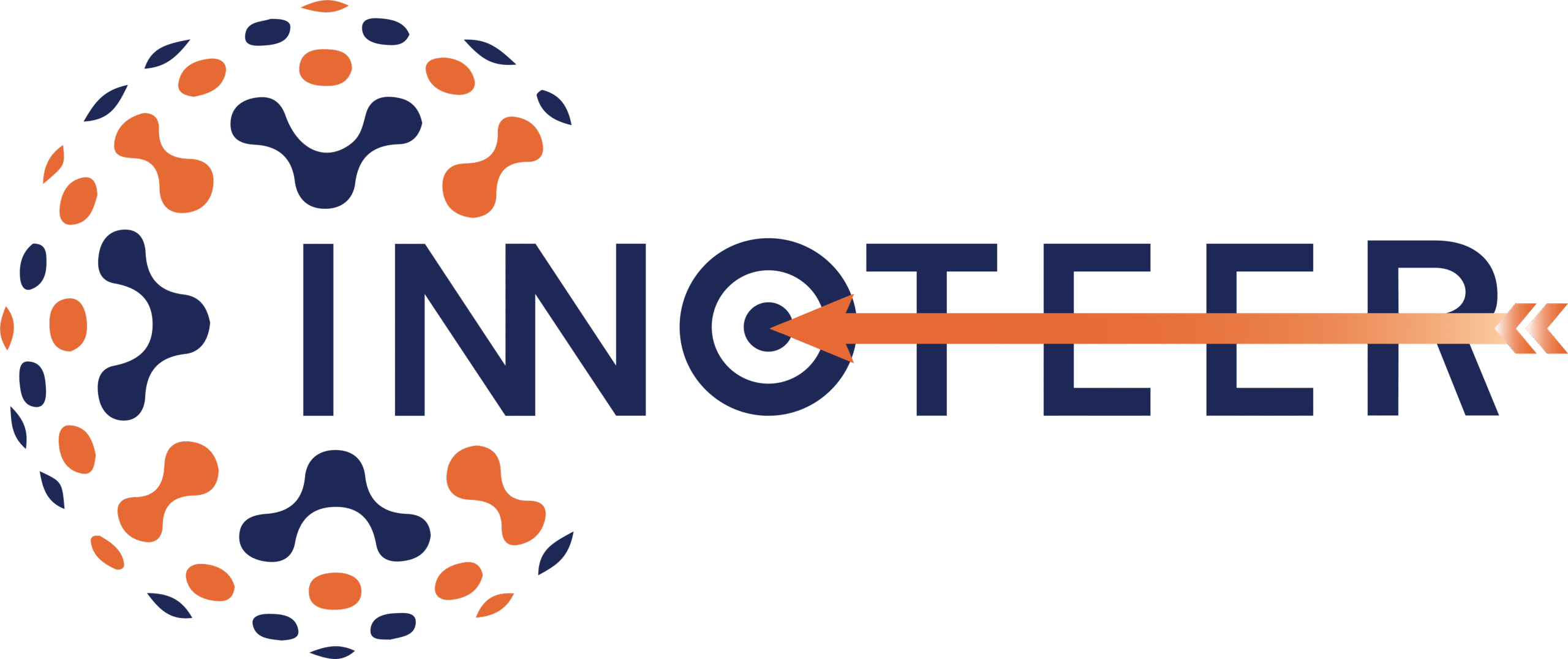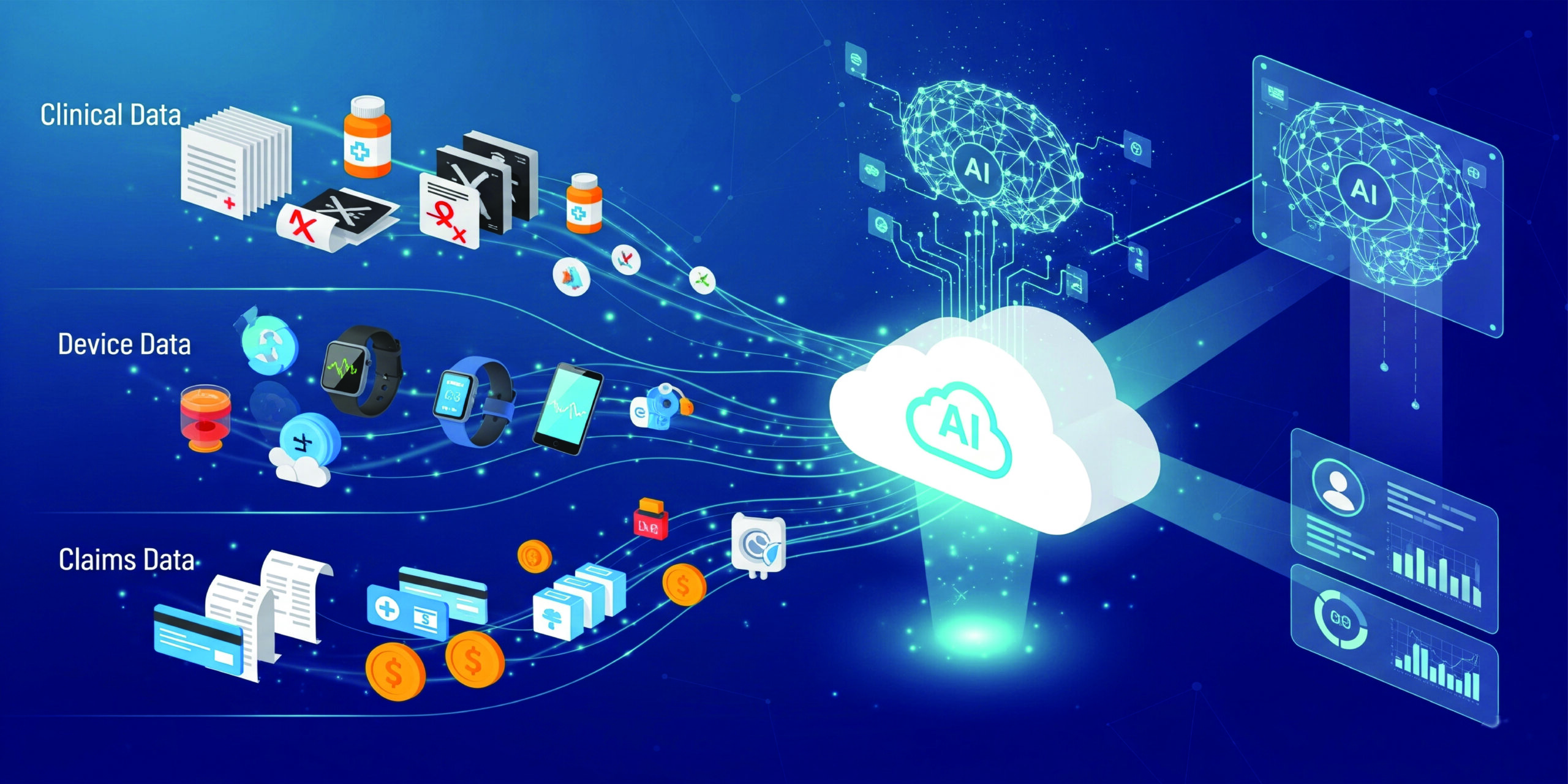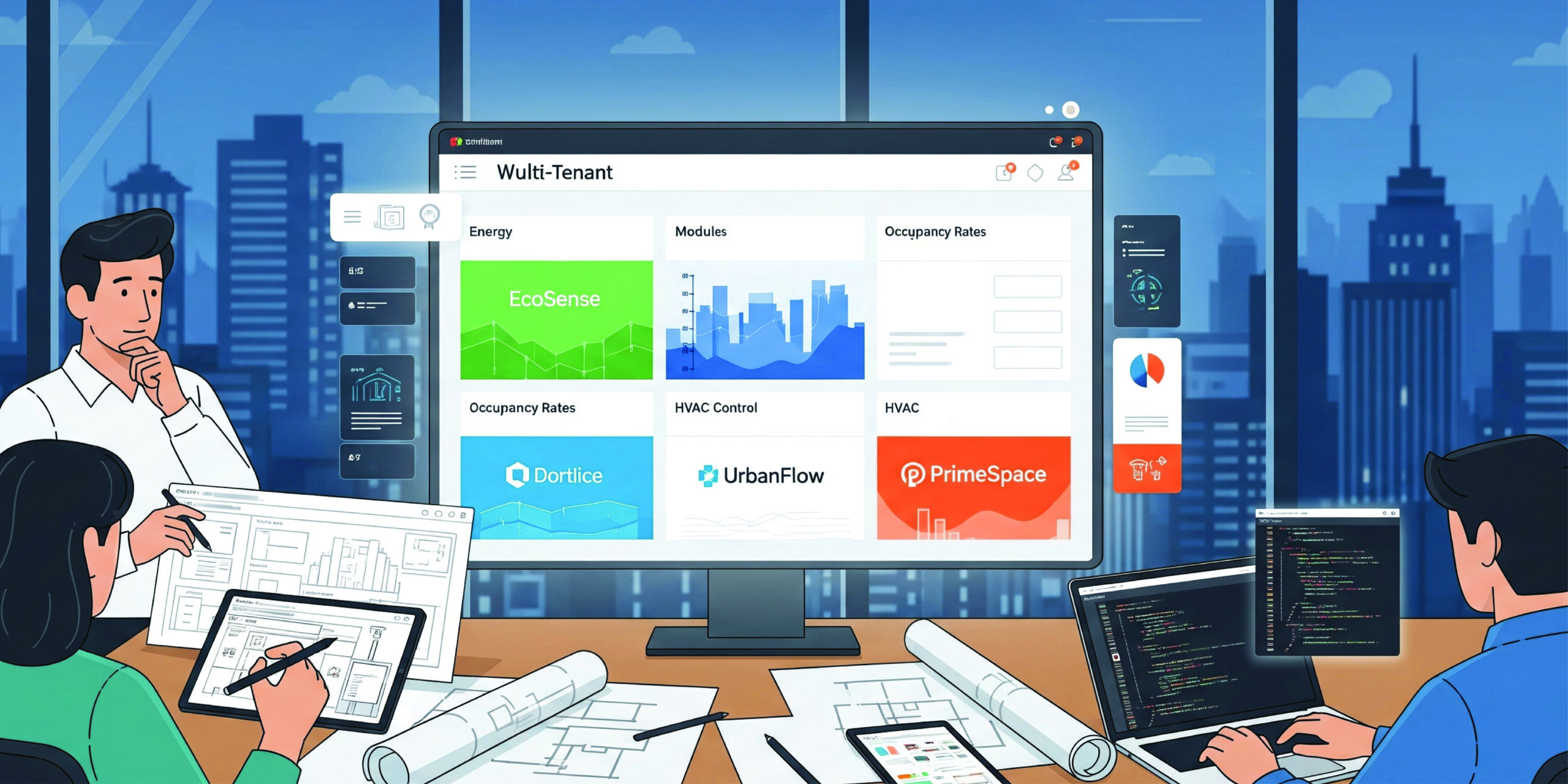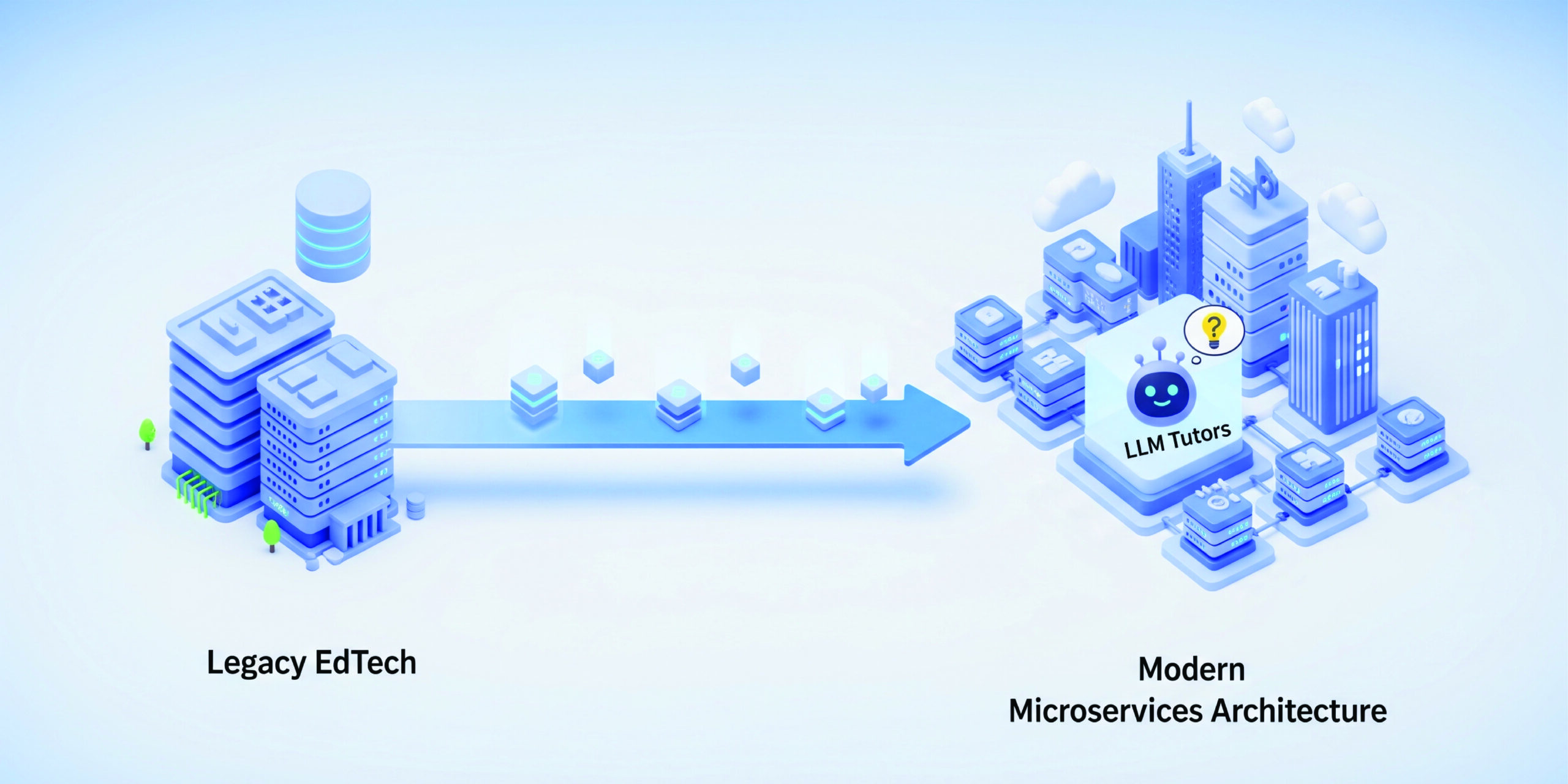I. Why Unified Healthcare Data Is Still Rare
The healthcare industry has made tremendous progress in digitization — EMRs are nearly ubiquitous, connected medical devices stream real-time vitals, and claims systems are fully electronic. Yet, most organizations are still trapped in data silos. Clinical data sits in Epic or Cerner, device telemetry streams into isolated IoT platforms, and insurance claims live in entirely separate transactional systems.
This fragmentation directly undermines the promise of AI and data-driven care. Without a unified foundation, even the most sophisticated AI models can’t deliver meaningful insights or improve outcomes. Care gaps remain invisible, fraud detection lags, and value-based care initiatives stall.
In our recent engagement with a leading HealthTech platform, we tackled this challenge head-on — integrating clinical records, real-time device data, and historical claims to power actionable AI workflows. Here’s how we did it.
II. The Challenge We Faced
We inherited a fragmented ecosystem spanning three distinct systems:
- Electronic Medical Records (EMR) — Epic-based extracts with clinical encounters and procedures.
- Connected Device Data — Patient vitals streaming from an IoT cloud platform.
- Insurance Claims — Flat file exports from a claims processing system.
None of these sources shared a common patient identifier. In some cases, even names were spelled differently. Dates of birth and zip codes were inconsistent. To make matters more complex, every dataset included Protected Health Information (PHI), requiring HIPAA-compliant handling at every step.
On top of that, data access was slow. Clinical analysts and data scientists waited days for manually stitched CSVs or isolated exports — making AI experimentation sluggish and often inaccurate due to mismatched or incomplete patient records.
The business goal was clear: create a unified, AI-ready dataset that brings together the clinical, physiological, and administrative context for every patient — in near real-time — without compromising on security or compliance.
III. The Cloud-First Integration Blueprint
To break the silos, we designed a cloud-first architecture grounded in Azure, chosen for its HIPAA compliance, security toolchain, and native support for healthcare standards.
Here’s the backbone we built:
- Azure Data Factory (ADF): The orchestration engine, handling ingestion from EMR exports, IoT cloud endpoints, and claims systems — running on scheduled and event-based triggers.
- Azure Data Lake Storage Gen2: A unified data lake storing both structured (claims, clinical records) and unstructured data (device payloads, PDFs). Data was staged in raw, cleansed, and curated zones.
- Azure Purview: For automated data classification, sensitive data tagging, and lineage tracking across ingestion pipelines.
We standardized pipelines for each source:
- EMR Data: Converted Epic extracts into FHIR-compliant formats using healthcare-specific transformations.
- Device Telemetry: Ingested MQTT-over-HTTPS payloads using a custom Azure Function and landed the streams in Parquet format for downstream analytics.
- Claims Data: Integrated via secure SFTP and APIs — flattened and schema-mapped for consistency.
Every pipeline was built to be modular, monitored, and scalable — ensuring fast onboarding of future data sources.
IV. Data Fusion & Entity Resolution
Connecting the dots across systems was the next big hurdle — especially without shared identifiers. We implemented probabilistic patient matching, combining:
- Fuzzy matches on name variations
- Exact or close matches on DOB, zip code, and procedure dates
- Encounter timestamps and clinic IDs as tie-breakers
This logic was codified using Azure Databricks notebooks and orchestrated within ADF. The result: a reliable Patient 360 View with:
- Encounter history across facilities
- Longitudinal vitals and device health trends
- Insurance claim timelines, including procedures and reimbursements
To manage access and transformations, we zoned the data lake into:
- Raw Zone (immutable source data)
- Curated Zone (cleansed, standardized)
- Analytics Zone (joined, patient-level entities)
- ML Zone (feature-engineered, labeled datasets)
PHI was stored separately with Access Control Lists (ACLs) and encryption, ensuring sensitive fields were only available to authorized roles
V. Enabling AI Workflows on Unified Data
Once the unified dataset was in place, we turned to AI enablement — not in abstract, but in real, production-grade workflows:
- Readmission Risk Scoring: Trained models on patient history, vitals, and procedure types to flag likely re-admissions within 30 days.
- Post-Operative Anomaly Detection: Used time-series modeling to detect deviations in post-surgical vitals like blood pressure or SpO2, triggering nurse interventions.
- Claims Fraud Detection: Analyzed claims for anomalies in billing codes, frequency, and patient demographics — surfacing patterns indicative of potential fraud.
All models were built and trained using Azure Machine Learning and deployed as REST endpoints. We exposed these securely via Azure API Management, enabling clinical apps and admin portals to consume predictions in real-time.
To bring insights closer to decision-makers, we embedded the results into Power BI dashboards, tailored for:
- Clinicians — Daily patient risk lists, anomaly alerts
- Operations — Claims trends, fraud flags
- Executives — Reimbursement insights and AI ROI metrics
-
Compliance & Security by Design
Given the sensitivity of healthcare data, compliance wasn’t an afterthought — it was baked into the design:
- Role-Based Access Control (RBAC): Integrated with Azure Active Directory using role + attribute-based policies.
- Audit Trails: All data access, pipeline activity, and API hits logged via Azure Monitor, with critical secrets managed via Key Vault.
- PII Tokenization: PHI fields were tokenized using reversible encryption for authorized analytics, and redacted entirely for non-privileged users.
- Lower Environment Masking: Dev/test environments received anonymized datasets with consistent referential integrity — enabling model experimentation without compromising compliance.
VII. Business & Clinical Impact
The transformation wasn’t just technical — it had tangible impact:
- Data availability SLA improved from 3 days → under 6 hours
- Patient matching accuracy reached 98%, verified against sampled manual audits
- Claims fraud review effort reduced by 45%, freeing up admin teams for high-value tasks
- AI metrics began feeding value-based care models — opening new pathways for outcomes-based reimbursements
From care delivery to revenue cycle management, every stakeholder benefited from faster, smarter, more secure access to unified data.
VIII. Scaling This for the Future
Our blueprint was designed to evolve. We’ve already started plugging in new data domains:
- Pharmacy Data: Ingesting medication adherence and refill trends
- Wearables: Apple Health and Fitbit integrations for proactive care modeling
We’re also enabling external model integrations:
- AWS Bedrock for hosted foundation model inference
- Azure OpenAI for physician note summarization and clinical chatbot prototyping
With a robust cloud-native foundation and structured data pipelines, the platform is now primed for GenAI use cases — from automated charting to real-time clinical decision support.
IX. Takeaways for HealthTech Platform Owners
If you’re aiming to bring AI into the heart of your HealthTech platform, here’s what we learned:
- AI starts with unified data. Without fusion across clinical, device, and claims data, your models will always be blind to the full picture.
- Cloud-native designs aren’t just about scale — they enable security, governance, and futureproofing.
- Execution matters. Entity resolution, PHI zoning, access controls — these are what make intelligent care possible, not just data science.
Unifying healthcare data isn’t just a technical project. It’s the first step toward delivering proactive, intelligent, and outcomes-based care at scale



